Published:
Author: Antonio Maria Guerra
Panettone

Panettone’ is one of the most typical Italian Christmas cakes. Its origins are deeply rooted in the distant past of the city of Milan: some scholars think they could be traced back to the Classical Era. Let’s deepen the knowledge of this specialty, much appreciated also outside Italy. Let’s find the most traditional bakery that prepares it following the original recipe.

What is Panettone?
In September 2003, the characteristics and the method of production of this dessert were ratified through a specific procedural guideline compiled by a committee of Milanese Master Pastry Chefs. This procedural guideline was later integrated into a Decree of the Italian Ministry of Productive Activities (*1).
The ‘official’ definition of Panettone is:
Soft oven-baked confectionery product, obtained by natural fermentation of sourdough, with a round base and a cracked top crust characteristically cut. It’s texture is fluffy and elongated, its scent is the typical sourdough leavening aroma.
Notes:
*1: Decree of 22 July 2005, published in the Official Gazette number 177, 01/08/2005.
Milan, the birthplace of Panettone.
Milan, one of the most important Italian cities, is in the Lombardia Region. It’s, without doubt, the major economic center of the country.


Panettone and its legends.
In this paragraph will be presented some of the most famous legends about the birth of Panettone. These legends, although not very reliable and thus quite useless to establish with precision the origins of this Christmas dessert, undoubtedly have the merit of greatly enhancing its charm.
The ‘pan di Toni’ (‘Tony’s bread’)
The most known story is set in the Fifteenth Century, at the court of Ludovico Maria Sforza, Duke of Milan. According to this legend, on the occasion of a great Christmas banquet, the nobleman’s chef, distracted by many tasks, accidentally burned the dessert. Quite a problem, especially considering the importance of the guests, unexpectedly solved by a young apprentice called Toni. The previous morning, the boy had prepared a kind of bread for himself, using the few ingredients at his disposal, including eggs, butter, flour, candied fruit and raisins. This sweet bread, suddenly became the last resort to save the unfortunate situation, was served to the guests. They appreciated so much its taste that the Duke himself asked for information. The ‘official’ cook, though reluctantly, had to admit that it was the ‘pan del Toni’ (the ‘bread made by Toni’).
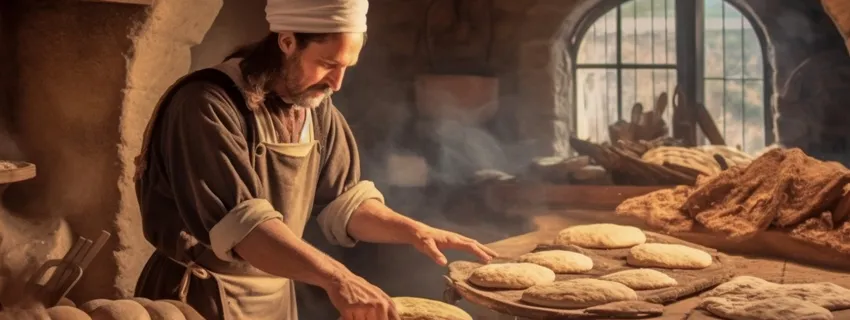
The Panettone of ‘Messer Ulivo’
Another legend tells of a falconer, Messer Ulivo, so madly in love with a baker’s daughter to change his job, starting to work for the father of his beloved. It seems that, as a symbol of his affection, he invented a dessert, using eggs, sugar, butter, flour and raisin. The ‘Panettone’ made by Messer Ulivo achieved such a great success that he could marry the woman he desired.

The Panettone of Sister Ughetta
The last legend tells of Ughetta, a nun who is supposed to have invented the Panettone to give a little joy to her sisters.
Although this story is the least likely of the three presented here, it’s interesting to note that the word ‘ughett’ in Milanese dialect means ‘raisin’: this is, ‘coincidentally’, one of the main ingredients of the Christmas dessert we are talking about.

Where to eat the original Panettone?
It’s difficult to identify the oldest Milanese pastry shop specialized in the preparation of the classic Panettone.
Read more
Until we find it, please refer to the following list including some of the more traditional ones.
- Pasticceria Marchesi
Galleria Vittorio Emanuele II, 20121 – Milan Official website; - Pasticceria Cova
Via Monte Napoleone, 8, 20121 – Milan Official website; - Pasticceria Sant Ambroeus
Corso Giacomo Matteotti, 7, 20121 – Milan Official website; - Pasticceria Viscontea
Via Edmondo de Amicis, 39, 20123 – Milan Official website;

The origin of the name.
There are several hypotheses about the origin of the name ‘Panettone’ (in Milanese ‘panattòn’), here follow some of them:
Read more
Having done this, he cut three ‘large loaves of bread’ into slices, distributing them among the members of the family and keeping one for good luck. It’s quite possible that these ‘large loaves of bread’ were a primitive form of Panettone.
In the first volume of his ‘History of Milan’ (1836), Count Pietro Verri, historian, philosopher and economist, described this ritual:
“On the eve of Holy Christmas a log adorned with fronds and apple was burned, and wine and juniper were sprinkled on it three times: and all the family stood around it in celebration. This custom still lasted in the tenth-fifth century, and Galeazzo Maria Sforza celebrated it. On Holy Christmas Day the fathers of the family have been distributing money ever since so that everyone could enjoy themselves by playing. Large loaves of bread were used on those days; and chickpeas, ducks and pig meat were placed on the table, as even nowadays the people are wont to do.”

The ‘log ritual’ (‘rito del ciocco’).
The ‘log ritual’ was once a very important tradition in Milan: on Christmas Eve, every head of a family poured wine over a large branch of wood (‘ciocco’) and burned it in the fireplace.
Continua
La sera della vigilia di Natale ogni capo famiglia, dopo aver cosparso del vino su un grosso ramo di legno (il ‘ciocco’), lo buttava nel camino perchè bruciasse.
Fatto ciò tagliava a fette tre ‘grandi pani’, distribuendole tra i componenti della famiglia e conservandone una per il giorno successivo, come segno di buon auspicio. Non si può escludere che questi ‘grandi pani’ rappresentassero una forma primitiva di panettone.
Nel primo volume della sua ‘Storia di Milano’ del 1836, il Conte Pietro Verri, storico, filosofo ed economista, ci descrive il rito:
“Nella vigilia del Santo Natale si faceva ardere un ceppo ornato di frondi e di mela, spargendovi sopra tre volte vino e ginepro: e intorno vi stava tutta la famiglia in festa. Questa usanza durava ancora nel secolo decimoquinto, e la celebrò Galeazzo Maria Sforza. Il giorno del Santo Natale i padri di famiglia distribuivano fin d’allora i denari acciò tutti potessero divertirsi giuocando. Si usavano in quei giorni dei pani grandi; e si ponevano sulla mensa ceci, anitre e carni di majale, come anche oggidì il popolo costuma di fare”

How Panettone is made?
From the very beginning of this paragraph, it should be pointed out that making the traditional Panettone is not an easy task and takes a lot of effort. This is exactly why, if it’s handmade (*1), it’s much more expensive than an industrial one, produced using specific machines. It goes without saying that, in general, the difference between the two types appears almost immediately quite evident.
Here follows the list of the steps for the preparation of Panettone:
Read more
1) Preparation of the dough;
2) First leavening;
3) ‘Spezzatura’: dough division;
4) ‘Pirlatura’: dough rounding;
5) Placement of the pieces of dough in the ‘pirottini’ (paper molds used to give this dessert its typical cylindrical shape);
6) Final leavening in the ‘pirottino’;
7) ‘Scarpatura’: this procedure consists of cutting (*3) the top of the dessert (the ‘cupola’);
8) Baking;
9) Cooling (Panettone is turned upside down to preserve its dome-shaped top).
Notes:
*1: Pastry chef may, however, use some equipment: for example, mixers;
*2: ‘Pirottino’: paper mold used to give this dessert its typical cylindrical shape;
*3: A cross-shaped cut;
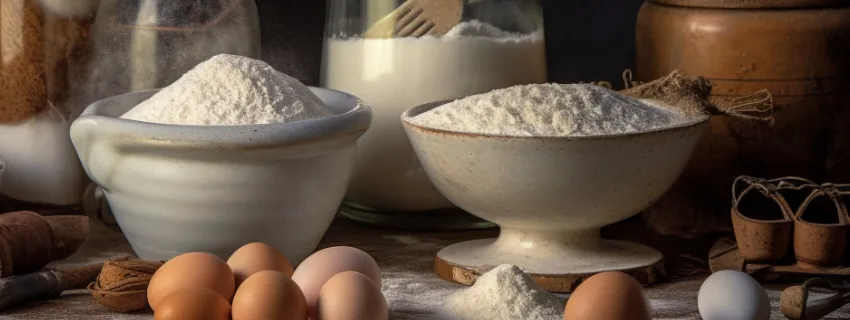
The ingredients of Panettone.
Here follows a list of the main ingredients used to make the traditional Panettone, this list is per the official procedural guideline:
- Wheat flour (type 0);
- Sugar;
- Chicken eggs;
Read more
- Butter;
- Raisin;
- Candied fruit (citron and orange);
- Natural yeast;
- Salt;
The guideline allows the use of some other ingredients, such as milk, honey, malt, cocoa butter and a few emulsifiers and preservatives.
Producers have some freedom when choosing quantities (in any case not less than a defined percentage) and in the preparation (for example, the number of risings). This kind of discretion can be considered, in a way, their ‘secret’ to create the ‘perfect’ Panettone.

The shapes of Panettone cake.
As already explained in the previous paragraphs, the ancestor of Panettone was just a ’large loaf’, rich in ingredients, quite low and round shaped (img.1). During the first half of the 20th century, the food entrepreneurs Angelo Motta and Gioacchino Alemagna introduced the use of the ‘pirottino’: this particular paper container made their Panettone high and cylindrical, with a domed top (‘cupola’) (img.2). Recently the Milanese bakers and some confectionery factories are trying to revive the original tradition, returning to make a shorter Panettone (img.3).
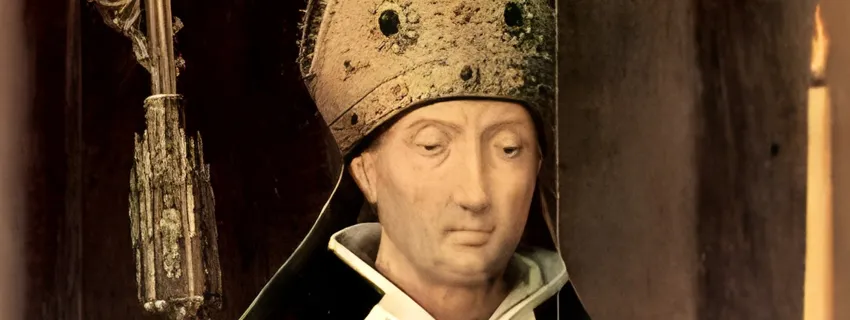
Saint Blaise and Panettone.
An ancient Milanese tradition consists in saving a portion of the Christmas Panettone and eating it after a few weeks: more precisely on February 3, the day in which St.Blaise is celebrated.
This Saint has a central role in at least a couple of legends:
Read more
- One of them tells a story in which he supposedly made appear a Panettone out of nowhere, saving a greedy priest from embarrassment.
- Another says that he saved a young man about to choke on a fishbone stuck in his throat, making him swallow a bread crumb. Since then it is a common belief that eating Panettone on 3 February protects health, especially that of the respiratory system (*1).
Note:
*1: A famous Milanese proverb says: “A San Bias se benedis la gola e él nas” (“during the Saint Blaise celebrations, throat and nose are blessed”).

The origins and evolution of Panettone.
As it’s easy to imagine, the more ancient are the origins of a gastronomic specialty, the more difficult is to trace them with precision: this makes very difficult, if not impossible, to establish a proper ‘date of birth’. Panettone is no exception: its recipe and appearance, as we know them today, are the result of an evolution lasted for centuries. The only certainty in the study of this dessert is its birthplace: the city of Milan.
Read more
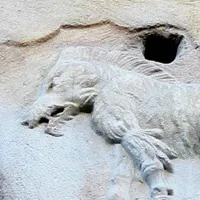 Celts and Romans: Some scholars hypothesize that in the VI Century BC, the ancient tribe of Celtic origin, founder of ‘Medhelan’ (today’s Milan), may have been the first to taste a primitive form of Panettone (*1).
Celts and Romans: Some scholars hypothesize that in the VI Century BC, the ancient tribe of Celtic origin, founder of ‘Medhelan’ (today’s Milan), may have been the first to taste a primitive form of Panettone (*1).
Other scholars point out the similarity of this dessert with a particular type of bread, very rich in ingredients, prepared in the classical era by the Romans.
The available information is undoubtedly inaccurate, but still useful to understand how ancient is the tradition of this Christmas specialty.
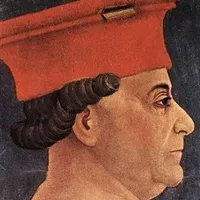 Middle Ages and Renaissance: Historical records indicate that, in the XIII Century, the richest citizens of Milan probably tasted the ‘forefather’ of Panettone: this consisted of a large loaf of bread, enriched with many ingredients.
Middle Ages and Renaissance: Historical records indicate that, in the XIII Century, the richest citizens of Milan probably tasted the ‘forefather’ of Panettone: this consisted of a large loaf of bread, enriched with many ingredients.
In one of his writings of the late Fifteenth Century, Giorgio Valagussa, humanist and preceptor of the Sforza house, makes explicit reference to ‘three big wheat loaves’ (*2): on Christmas Eve, during the ‘rito del ciocco’ (‘Log Ritual’ *3), every head of a family used to cut them, distributing the slices among his relatives and preserving one as a good omen.
 Sixteenth and Seventeenth Century: The ‘Varon milanes de la lengua de Milan’ was published between the end of the Sixteenth Century and the beginning of the Seventeenth. It’s an etymological dictionary of the Milanese dialect, written by Giovanni Capis. This book is particularly interesting because makes explicit reference to the ‘panaton de Danedaa’, described as: “A large loaf of bread, similar to those prepared on Christmas day.“
Sixteenth and Seventeenth Century: The ‘Varon milanes de la lengua de Milan’ was published between the end of the Sixteenth Century and the beginning of the Seventeenth. It’s an etymological dictionary of the Milanese dialect, written by Giovanni Capis. This book is particularly interesting because makes explicit reference to the ‘panaton de Danedaa’, described as: “A large loaf of bread, similar to those prepared on Christmas day.“
Another reference to Panettone can be found in a note kept at the Borromeo College, in the city of Pavia (a little town not far from Milan). This note dates back to 1599 and specifies with precision the ingredients used to prepare “13 pani grossi per dar alli scolari il giorno di Natale” (”13 big loaves of bread to give to students on Christmas Day”). These ingredients are butter, raisins and various spices.
1814: the ‘panatton’ of Cherubini: In 1814 the Milanese writer Francesco Cherubini began to write a milanese-italian vocabulary: this is very important in the history of Panettone (in dialect ‘panatton’), because provides the first definition of it:
“A kind of bread made with butter, sugar and raisins from Corinto (ughett): it’s prepared in our city during Christmas and can have different shapes. We call it “el panatton de Natal” (the “Christmas panatton”)”.
Notes:
*1: They ate it during the traditional ‘Yule’ celebration, held each year in December, on the occasion of the winter solstice;
*2: At that time, wheat bread was very rare and expensive. Only the nobles and the wealthiest people could afford its high price;
*3: The ‘rito del ciocco’ (‘Log ritual’) mentioned by Valagussa is described in detail in another paragraph of this article.
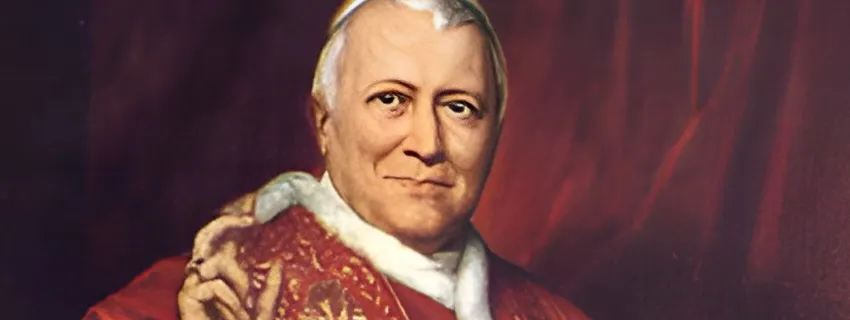
Panettone for Pius IX.
In 1847, Paolo Biffi, pastry chef of the Savoia Royal Family, prepared a huge Panettone to donate to Pope Pius IX. He also hired a special carriage to be sure that the Christmas cake could be quickly and safely delivered to Rome.

The ‘Kulic’.
‘Kulič’ is an Easter cake very popular in Russia and the Orthodox countries of Eastern Europe. It’s interesting to mention it in this article because it’s quite similar to Panettone. These two desserts, for example, have in common some of the ingredients used for the dough, like flour, milk, butter and sugar. Another similarity is in the use of raisins, candied fruit and almonds. There are also some differences: unlike Panettone, ‘Kulič’ is covered with icing and is aromatized with liqueur and various spices.
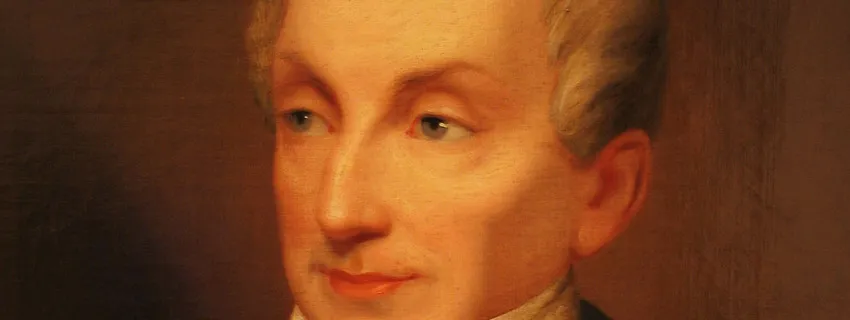
Prince Metternich loved Panettone.
Prince Klemens von Metternich loved Panettone very much.
That’s why, during the Austrian domination of Milan, Ficquelmont, governor of the city, used to donate one to him on the occasion of the Christmas festivities.
It seems that the Prince, referring to the revolting Milanese people, once said: “they are as good as Panettone”.

The right wine.
Which wine to drink with a delicious slice of Panettone?
Read more
There are many choices, one of the best is a white one, slightly sparkling, sweet and fresh. For example, a ‘Moscato d’Asti’.
- Its sweetness accompanies that of the cake, without exceeding it.
- Its acidity, the delicate saltiness and slight effervescence accompany the greasiness of the dough.

Copyright information.
The images displayed in this page belong to WebFoodCulture, with the exception of:
Public Domain Images:
- Pope Pio IX, George Peter Alexander Healy 1871 (Wikipedia Link) {PD-Art}
- Metternich, 1834 / 1840 (Wikipedia Link) {PD-Art}
- Saint Blaise, Hans Memling, 1491 (Wikipedia Link) {PD-Art} {PD-US}
- Milan topography, 1573 (Wikipedia Link) {PD-US}
- Francesco I Sforza, B.Bembo, XV sec. (Wikipedia Link) {PD-Art} {PD-US}
Creative Commons Images:
- Piazza Mercanti, Milan, Stefano Stabile (Wikipedia Link)
- Kulich, Tamara Ustinova (Wikipedia Link)
- Milan, Scrofa Seminaluta, image owner: Bramfab (Wikipedia Link)
